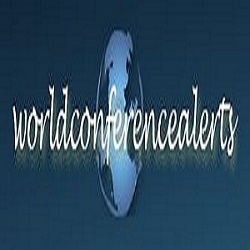About Astronomy, Astrophysics and Space Science
The “5th International Conference on Astronomy, Astrophysics and Space Science”, is scheduled during February 27-28, 2025.
Astronomy Conference 2025 runs with the theme “Astronomy, Astrophysics, And Space Science - Dynamic and Rapidly Evolving Fields”. We are pleased to welcome all the leading researchers, delegates, scientists, scholars, and professors to take part in this conference to witness precious scientific discussions and bestow future improvement in the fields of astronomy, astronomy, and space science. This Conference will prominence on the informative research on its impact on clinical outcomes, through poster and oral demonstrations, educational workshop sessions, and noteworthy plenary presentations. Astronomy Meet is a perfect podium to find out how astronomy, astronomy, and space science research advances obliging to science, space technology, and human society. Astronomy Conference will mainly highlight the recent matters during the event, which reflect present education, developments, research, and innovations globally in Astronomy, Astrophysics, and Space Science.
Scientific Sessions
Track1 Planetary Science:
Planetary science is the finding out about the celestial bodies that orbit stars, with a unique centre of attention on our personal photovoltaic system.
Planetary scientists work to enhance our perception of the planets, satellites, and smaller bodies in the photovoltaic machine through:
- Studying the atmospheres, surfaces, and interiors of planets,
- Understanding the origins of planets and the physical processes at work, and
- Using radar to determine the physical characteristics of asteroids and to search for asteroids that may pose a hazard to Earth.
Track 2 Solar Astronomy:
Solar astronomy is the radiation astronomy of the star, Sol, regularly known as the Sun. Solar astronomy deals with superior astrophysical factors of Solar physics, and books that supply very fundamental know-how about the Sun.
Track 3 Solar System formation and Evolution:
The formation and evolution of the Solar System started out 4.5 billion years in the past with the gravitational giving way of a small phase of
Tracks and Key Topics
- Track 1 : Planetary Science
- Track 2 : Solar Astronomy
- Track 3 : Solar System formation and Evolution
- Track 4 : Big Bang Theory
- Track 5 : Magnetohydrodynamics
- Track 6 : Cosmic Microwave Background and Radiation
- Track 7 : Aerospace Engineering
- Track 8 : Gravitational Waves
- Track 9 : Nuclear Astrophysics
- Track 10 : Optical Astronomy and Optoelectronics
- Track 11 : Cosmology
Organizing Committee Member
Speaker














Market Research
The Global Astronomical Telescope Market is projected to grow from 207.1 thousand units in 2018 to 427.4 thousand units in 2026 with a CAGR of 9.2% over the forecast period. The market is forecasted to reach USD 345.1 Million by 2026, according to a new report by Reports and Data. This can be mainly contributed by the development of astronomical research and increasing scope of amateur astronomy, rise in the interest for astrophotography and attention garnered due to sci-fi films and comic cons. The technological and scientific development in astronomy, mainly in areas such as electronics & optics have become an essential part of our daily life. Applications such as mobile phones, personal computers, global positioning systems (GPS), communication satellites, solar panels, and magnetic resonance imaging (MRI) scanners are gaining popularity in several sectors of the market. Astronomy is not one of economic measure even after providing a wealth of substantial, technological, and monetary gains.










